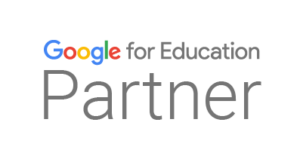Phishing attacks in schools are no longer rare or accidental. Educational institutions have become one of the most targeted sectors for cybercriminals. The reason is painfully simple. Schools operate in high-trust environments with limited cybersecurity infrastructure and often rely on overworked staff who are not trained to identify sophisticated scams. That one email with a familiar name and an urgent tone might just be enough to unlock the gates.
Cybercriminals have evolved far beyond suspicious email IDs and broken grammar. Today, phishing attempts mimic internal communication styles, use stolen credentials, and even create realistic invoices or principal-level requests. The danger lies in how real everything seems. This is exactly where AI in education changes the game.
Why Human Vigilance Alone Is Not Enough
Teachers, administrators, and office staff already manage a demanding workload. From lesson plans and parent emails to online grading portals and compliance paperwork, they juggle multiple platforms and responsibilities every day. Amid such multitasking, even the most alert staff member can miss subtle red flags in a fraudulent email.
Social engineering tactics prey on human emotions like urgency, fear, and trust. A staff member might receive an email claiming to be from the school principal, asking for immediate access to student data or financial records. They often act without hesitation, not because of negligence but because of instinct and workplace hierarchy.
Training plays an important role, but it cannot be the only line of defense. The threat landscape evolves quickly. What worked as a warning sign last month might be entirely outdated now. Schools need a smarter and faster ally.
AI in Education Powered Protection
Artificial Intelligence has the ability to detect phishing threats before a human can even notice a problem. It scans communication patterns, compares metadata, analyzes attachments, and identifies behavioral anomalies that would usually go unnoticed.
For instance, if an email appears to come from the school finance head at 2 AM with a slightly altered email address and an urgent fund request, AI can flag it before it reaches anyone’s inbox. It detects unusual writing styles, odd activity timings, and request patterns that fall outside normal behavior.
AI doesn’t get tired, distracted, or manipulated. It keeps learning and adapting to new tactics while offering a proactive security layer that traditional systems cannot match.
Beyond Detection and Toward Trust in Technology
Some schools hesitate to embrace AI because it seems overly technical or futuristic. In truth, AI in education security tools today are designed for simplicity. They run quietly in the background, integrate smoothly with systems like Gmail, Outlook, or ERPs, and need very little manual oversight.
The idea is not to replace human vigilance but to strengthen it. With AI scanning every email in real time, staff members can do what they do best. They can teach, manage, and support students without worrying about digital threats in their inbox.
Why Basic Filters Are No Longer Enough
Most schools use standard spam filters or antivirus programs as their main protection. These tools are helpful but were never built to fight the complex phishing techniques used today.
AI in education protection tools take it a step further. They not only scan message content but also understand context. If a teacher receives a file from a colleague that seems normal but actually includes hidden code, AI will catch it. If someone logs in from a device or location that’s unusual, AI can restrict access or ask for verification.
This smart, contextual approach is essential in school environments where trust is the default mode of operation.
Everyone in the School Benefits
AI protection helps more than just the IT department or leadership team. It secures the front desk, the accounts staff, the faculty, and even third-party vendors who work with the school.
When communication systems have intelligent monitoring at every level, the entire school becomes safer. Alerts are sent to the right people. Issues are handled before they grow. And the school builds stronger trust with parents, regulators, and internal staff by prioritizing both physical and digital safety.
This Is About Readiness Not Fear
AI is not a cure-all but a powerful tool for modern schools. With schools becoming hybrid and tech-enabled, the pace of learning is faster than ever. Protection must match that speed.
Rather than wait for a data breach or a costly cyberattack, forward-looking institutions are preparing early. They are choosing not just hardware and bandwidth but smart protective layers that work invisibly and constantly.
Start With the Right Questions
The journey to better digital protection begins by asking some basic questions. Can our system recognize a forged internal email? Do we have a way to flag risky transactions? Are we spending time and attention on threats that AI can handle more efficiently?
The answers lie in using platforms that are tailored for education. These solutions are designed for scale and simplicity, ensuring that the learning process continues without unnecessary disruption.
Your staff might miss that one email. It is not their fault. But AI won’t miss it. And sometimes, that is all it takes to stop a disaster before it begins.




 1st Floor, H-31, Sector 63,
1st Floor, H-31, Sector 63,
I really appreciate this post. I have been looking everywhere for this! Thank goodness I found it on Bing. You’ve made my day! Thx again